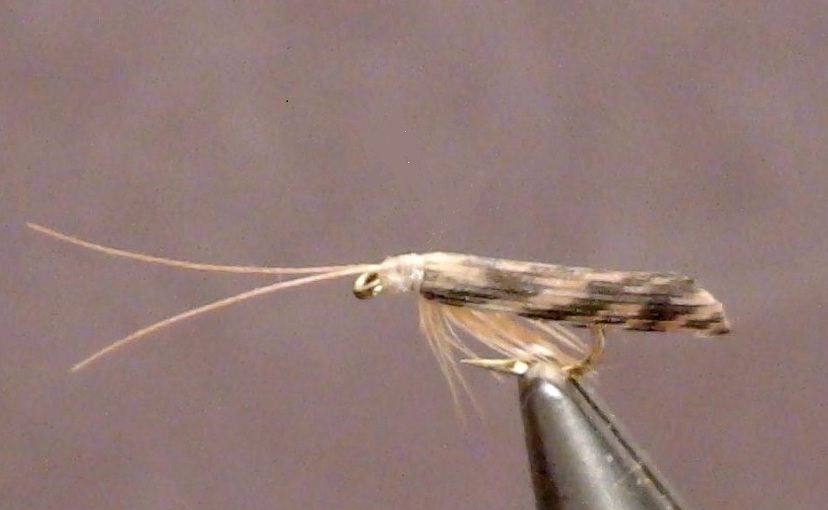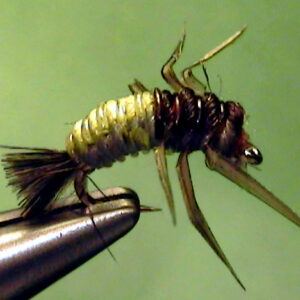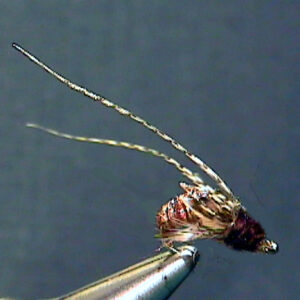Hook Size: 14/16
water but for a very short time for the trout to eat. They depart the water as soon
as their wings dry and that only takes a very short time. As we have said in
previous articles, the trout prefer the pupae because they are much easier to
catch. In some cases, the trout will hit the full grown adults before they depart the
water. My guess is they just don’t see the emerging pupae in time to eat them
and they end up trying to eat the adults.After the Hydrosyche species hatch, they will fly off to the streamside foliage and
stay there to mate. After mating, the females will either dive to the bottom and
deposit their eggs, or dip down to the surface to deposit them. I suppose this is
species dependent but also may occur both ways with different individuals of the
same species. You should be prepared to imitate them both way.The females do not start depositing their eggs until very late in the afternoon
usually just before dark. The activity continues on into the evenings. On cloudy,
rainy days the hatch and egg laying activity seems to start earlier in the
afternoon. As I mentioned previously, the hatch is usually still underway during
this time the females start to deposit their eggs. I suggest you wait until you start
having poor results on a pupae imitation before changing to a dry imitation of the
adult. You should be able to see the trout eating the egg layers. They usually
make a splashy rise when they feed on the surface. When they dive to deposit
their eggs, you would not be able to see anything occurring other than a possible
flash.
Imitating the Adult Egg Layers:
I suggest you first try a dry imitation of the adult. If the activity is fully underway,
you should get plenty of action. If your are not successful with the dry imitation,
then you should add some weight above the Perfect Fly Spotted Sedge Adult
imitation and fish it as a wet fly to imitate those females that dive to deposit their
eggs.
Knowing where to fish the adult imitation is fairly easy. The caddisflies will show
you. Even when they dive to deposit their eggs they return to the surface to drift
a few feet. You want to fish exactly where you see the egg layers.
In rough pocket water or runs and riffles, i suggest you fish up and across
making a lot of short cast.
In smooth water, I suggest you make longer, down and across presentations. It’s
usually not very difficult to catch the trout feeding on the egg layers. The sun has
usually below the horizon and it’s usually almost dark before the best action
begins. The biggest mistake you can make is to start fishing to early. When other
anglers are dinning or having a drink at the local bar, you could probably be on
the water catching trout.


